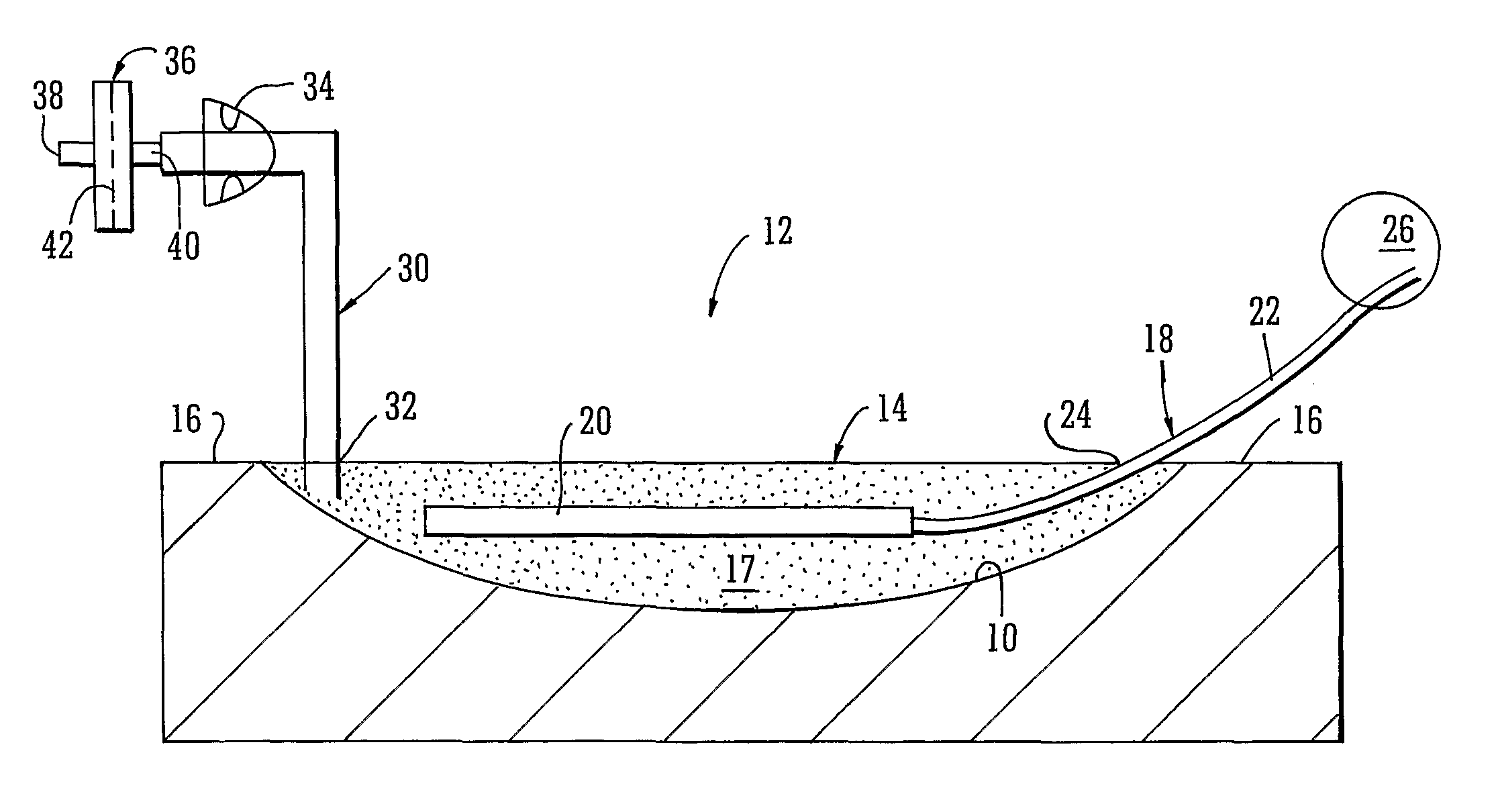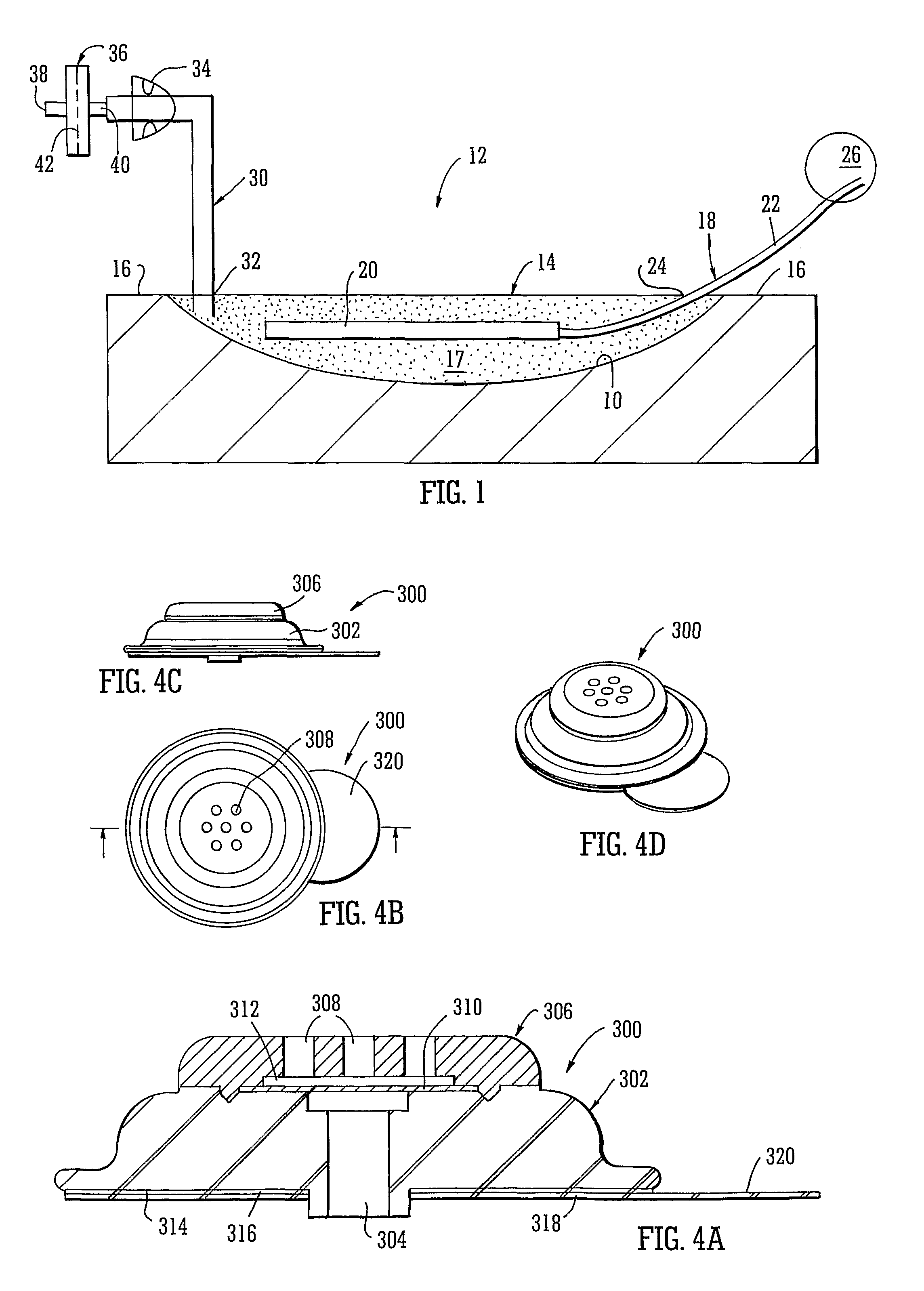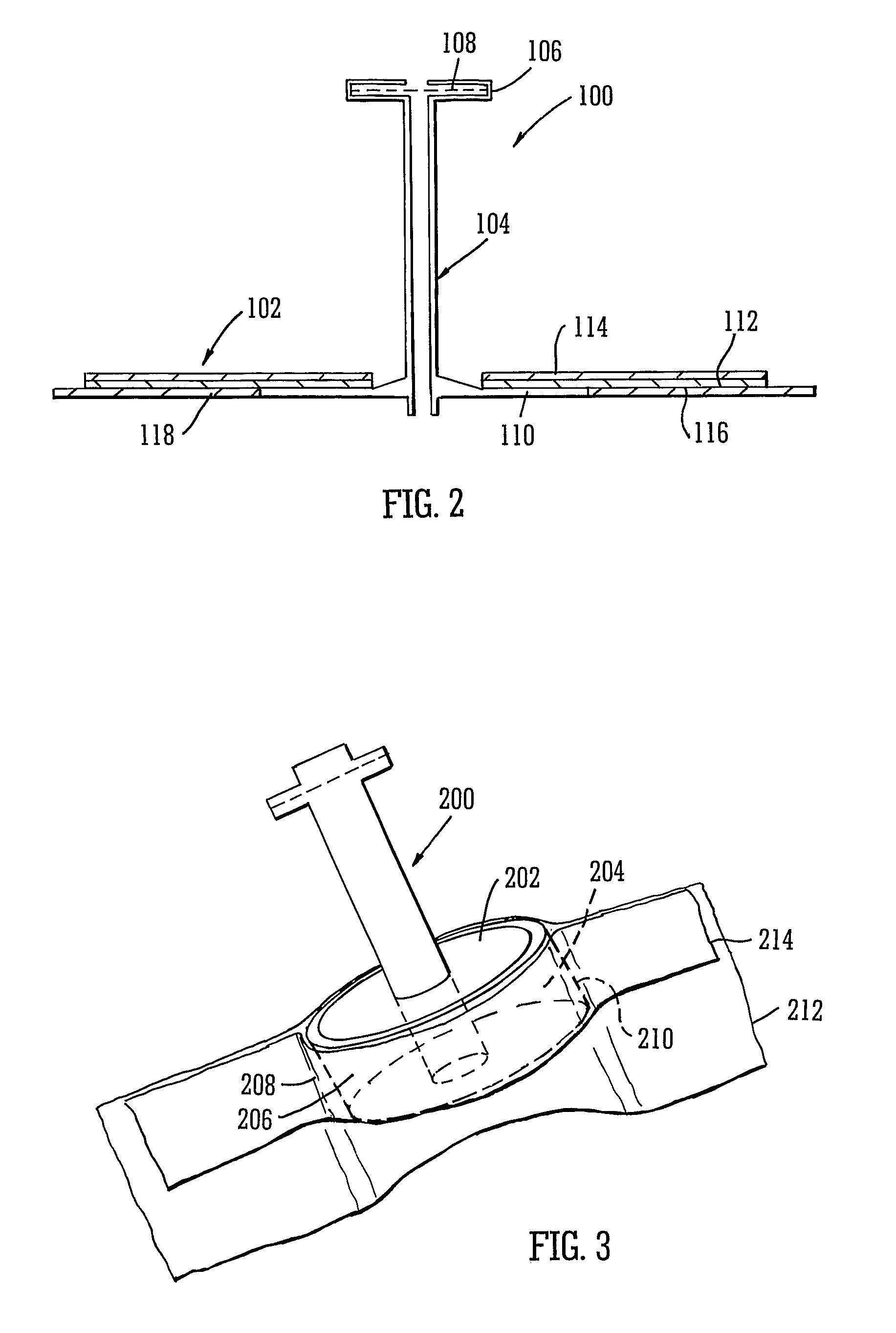Apparatus for topical negative pressure therapy
a technology of negative pressure and apparatus, applied in the direction of suction device, wound drain, intravenous device, etc., can solve the problems of increased infection risk, small amount of gaseous flow allowed, and more complex apparatus used, so as to prevent the ingress of potentially harmful bacteria and insufficient control.
- Summary
- Abstract
- Description
- Claims
- Application Information
AI Technical Summary
Benefits of technology
Problems solved by technology
Method used
Image
Examples
Embodiment Construction
[0018]According to a first aspect of the present invention there is provided apparatus for the provision of TNP therapy to a wound, the apparatus comprising: a sealing membrane for covering a wound to form a wound cavity in use; an aspirant conduit having one end thereof operably associated with the wound cavity, in use; vacuum means provided at a distal end of the aspirant conduit for applying a vacuum to the wound cavity when in use; and, air bleed means in fluid communication with the wound cavity when in use.
[0019]In this specification the term “vacuum” means a pressure less than ambient atmospheric pressure.
[0020]The air bleed means may be switchable in that the air bleed may be turned on and off as desired. In this regard the air bleed means may be provided by a second conduit having one end in communication with the wound cavity and having a filter associated with the conduit and a clamp or valve which enables the filter to admit air from the surrounding atmosphere to the wou...
PUM
 Login to View More
Login to View More Abstract
Description
Claims
Application Information
 Login to View More
Login to View More - R&D
- Intellectual Property
- Life Sciences
- Materials
- Tech Scout
- Unparalleled Data Quality
- Higher Quality Content
- 60% Fewer Hallucinations
Browse by: Latest US Patents, China's latest patents, Technical Efficacy Thesaurus, Application Domain, Technology Topic, Popular Technical Reports.
© 2025 PatSnap. All rights reserved.Legal|Privacy policy|Modern Slavery Act Transparency Statement|Sitemap|About US| Contact US: help@patsnap.com



